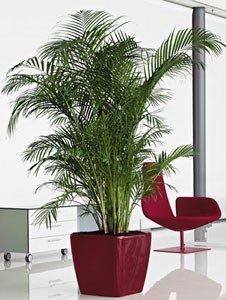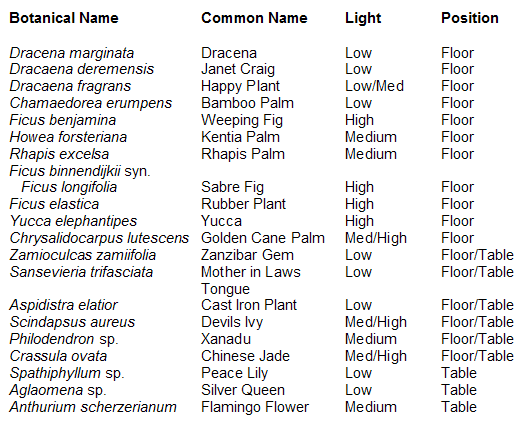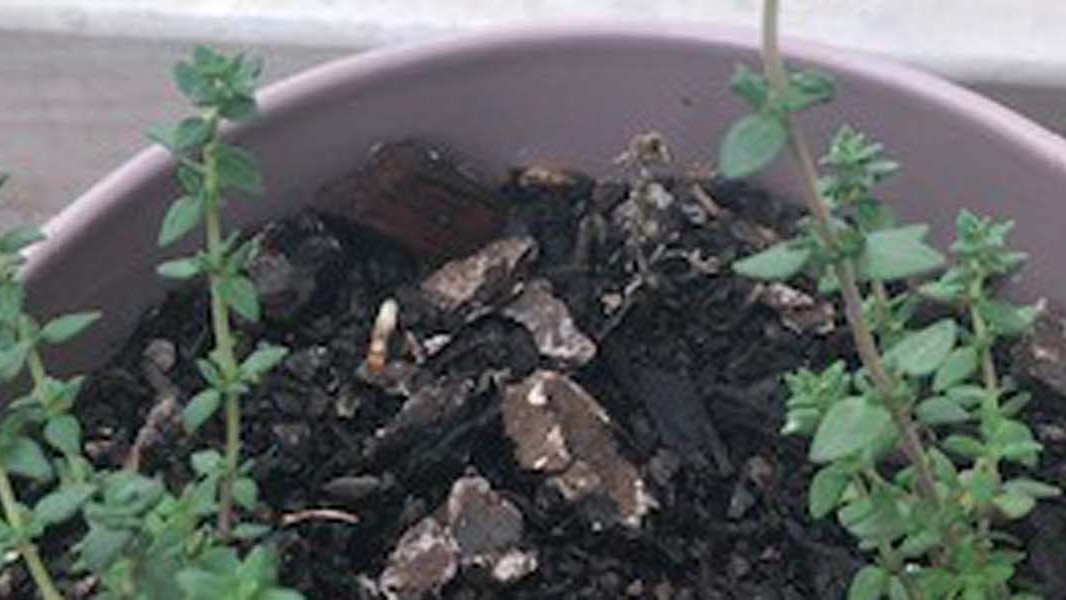On average, every Australian spends around 90% of their time indoors, be it at work, at home, at the shops or the local pub – a figure that is quite astonishing. But, if you think that’s frightening – a number of studies have found that the air indoors (where we spend most of our time) is generally more polluted than the air outside (where we spend about 10% of our time – or even less in some months)! Having plants growing indoors is an easy and attractive way of cleaning up this pollution.
A class of chemicals called Volatile Organic Compounds (VOCs) are the main indoor air pollutants. VOCs are present in many common office and indoor items including carpets, paints, wall panels, wood products (especially particle board) and furnishings, and can be pretty bad news. Including such baddies as formaldehyde, benzene, xylene, and toluene, VOCs decrease the indoor air quality and are a significant contributor to “sick building syndrome”, a term used to describe a range of symptoms thought to be caused by the office or home environment. Carbon dioxide and carbon monoxide also pollute indoor air.
The CSIRO estimates that the health cost of poor indoor air quality could be as high as $12 billion annually1. Indoor plants reduce the losses occurring through increased absenteeism and reduced productivity in the workplace.
If that happens in workplaces, just think of what happens at home!
How Plants Protect People
 Plants indoors can significantly reduce both VOCs and carbon dioxide from the air, meaning cleaner, greener, happier and more productive homes and offices2. But how do they do it? Removal of VOCs from the air indoors is actually done by the plant as well as the millions of micro-organisms in the soil. It has been shown that potting mix alone was able to remove some level of VOC’s from the air, although the amount removed significantly increased with a plant in the pot (due to the increased level of soil microbial activity that comes with having a real plant in the pot)2. Having just three indoor plants in 10m² of office space can go a long way indeed to improving indoor air quality.
Plants indoors can significantly reduce both VOCs and carbon dioxide from the air, meaning cleaner, greener, happier and more productive homes and offices2. But how do they do it? Removal of VOCs from the air indoors is actually done by the plant as well as the millions of micro-organisms in the soil. It has been shown that potting mix alone was able to remove some level of VOC’s from the air, although the amount removed significantly increased with a plant in the pot (due to the increased level of soil microbial activity that comes with having a real plant in the pot)2. Having just three indoor plants in 10m² of office space can go a long way indeed to improving indoor air quality.
When 28 different plants were compared the most efficient at removing VOCs were Hemigraphis alternate (red flame ivy), Hedera helix (common ivy) Hoya carnosa (porcelain flower or wax plant) and Asparagus densiflorus (foxtail fern) had the highest removal efficiencies for all pollutants; Tradescantia pallida (“wandering Jew”) was able to remove all but one of the VOCs tested 3. Don’t think, though, that these are the only effective plants (and don’t plant them outdoors as they become weedy). Those findings show that there are differences in plant effectiveness and suggest that it would be wise to have a mix of different species.
And in modern buildings with windows that are sealed to minimize unwanted temperature changes (“tight buildings”) levels of carbon dioxide are also higher than outdoors4, coming from air we breathe out, and can cause restlessness and sleepiness. Carbon monoxide can also be a little higher, generated by heating, smoking, incense and candles4. Since plants are responsible for removing these gases from the air, having them indoors not only helps save the planet, but helps make us less lethargic and generally feeling better!
Some research suggests that indoor plants, either because they bring people in contact with nature or because they improve indoor air quality can also increase creative task performance and lift mood.
So, let’s have a look at some readily available indoor plants, their light requirements, and their ideal positioning in the home or office.

Indoor Plant Care
Just like their friends outside, indoor plants need proper care because they can suffer from a variety of issues that can affect their health, well-being and appearance.
Too much “love”
This is the most common affliction of indoor plants. Yes, that’s right; many of us kill our indoor plants with love, either by overwatering or overfeeding them.
Feeding
Indoor plants are best fed once per month in the growing season or if flowering and then almost not at all during autumn and winter. However, this depends on what you feed them.
Watering
Watering needs to be monitored at all times. One of the best ways to do this is by putting your indoor plants into a self-watering pot, one that regulates the uptake of water into the soil. This way, over and under watering are no longer issues, and indoor plant ownership becomes a far less stressful endeavour.
Cleaning
It is also recommended that the leaves of indoor plants are periodically wiped with a damp cloth, on both the upper and lower surfaces. This helps remove dust that can build up and clog plant pores, removes any insects or eggs that may be present, and keeps the plant foliage looking shiny and healthy. It might be a bit tedious, but is worth it in the long run.
Light exposure
Rotate your plants every now and then (yes, turn them around on the spot) to keep growth nice and even by giving them even access to the source of light. Keep an eye on your indoor plants, especially over winter, as potential pest problems can present themselves in the cooler months.
Are there any downsides?
Unfortunately, indoor plants can be extremely harmful (often fatal) if ingested by pets, so it is advisable to keep indoor plants out of reach of puppies and kittens especially, but also adult dogs and cats.
References
1. Wood RA, Orwell RL, Tarran J, Torpy F, Burchett M. 2008. Indoor plants: improving the indoor environment for health, well-being and productivity. ISHS Acta Horticulturae 790: VIII International People-Plant Symposium on Exploring Therapeutic Powers of Flowers, Greenery and Nature.
2. Wolverton BC, Wolverton JD. 1993. Plants and soil microorganisms: Removal of formaldehye, zylene and ammonia from the indoor environment. Journal Mississippi Acacemy of Sciences 38 (2): 11 – 15.
3. Dong Sik Yang, DS, Pennisi SV, Son K-C, Kays SJ. 2009. Screening Indoor Plants for Volatile Organic Pollutant Removal Efficiency. HortScience 44 (4) 1377 – 1381.
4. The Centre for Australian Weather and Climate Research. 2010. Indoor Air Project Part 1: MAIN REPORT. Indoor Air in Typical Australian Dwellings.
Related Articles:
Staying Safe While Gardening
Gloves, socks and sometimes masks are very important in preventing disease obtained by gardening - the last thing you want, especially with the…
Newbie Sustainable Gardener in COVID Times
Extra time at home spurred an SGA subscriber to become a newbie sustainable gardener by starting her own veggie garden. Amy Esdaile tells us of her…




